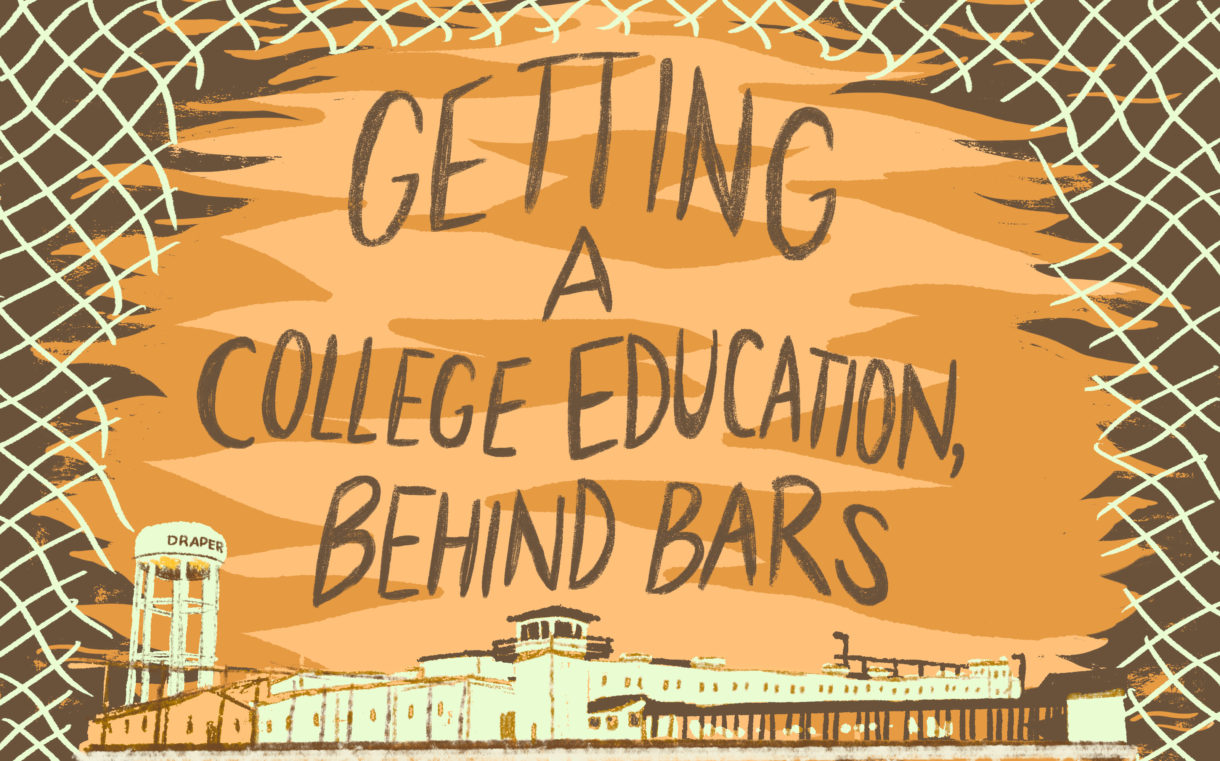Inmates are among the least-educated people in America. That’s despite research that shows education is one of the most effective ways to keep people from coming back to prison.
Now, there’s renewed interest in giving adults behind bars better access to higher education. A new bipartisan bill in Congress would allow incarcerated people to use federal Pell Grants — designed for low-income students — to pay for higher education, including college classes and workforce training.
“When we give people in prison an opportunity to earn an education, our communities are safer, taxpayers save money, and we can end the cycle of recidivism,” U.S. Senator Brian Schatz, D-Hawaii, a sponsor of the bill, said in a statement. The bill would “give people a real chance to rebuild their lives,” Schatz said.
If passed, the Restoring Education and Learning Act, known as the REAL Act, would reverse a more than two-decade ban on inmates using Pell. That ban, set in place in 1994 by Congress and President Bill Clinton, came in an era of “tough on crime” policies.
“Both Democrats and Republicans had a hand in creating the problem back in ’94,” says Jesse Kelley, who studies criminal justice at R Street, a conservative-leaning research firm. “So now everybody’s like, ‘OK well, we all already agree that something needs to be fixed. So let’s just do this.’ ”
The idea to reintroduce Pell Grants to the prison population came in 2015, when President Barack Obama’s Education Department announced an experiment, called Second Chance Pell. The department identified universities, community colleges and workforce training programs to serve incarcerated people who qualified for Pell. Today, according to the Department of Education, the pilot initiative has involved more than 10,000 inmates across 64 institutions. While there’s no official expiration date on experimental pilots, the Department of Education has said they typically last about three to five years. Congress would need to pass legislation like the REAL Act in order to take Second Chance Pell out of the pilot phase.
Two recent reports offer a glimpse into the the pilot program’s effectiveness. In January, the Vera Institute of Justice offered the most a comprehensive look at the program so far. It found:
- The majority of incarcerated people are academically eligible to take college-level courses, meaning they hold a GED or high school diploma.
- Education in prison means better job opportunities after being released. The report estimates an increase of about $45.3 million in combined earnings of formerly incarcerated workers during the first year after leaving prison.
- Access to education will lead to lower rates of folks returning to prison after they are released, saving states a projected $365.8 million per year on incarceration costs.
In 2018, a previous report from the Vera Institute of Justice found that people in the program describe the experience as transformative and become positive role models in prison.
“People in prison are often really ready for opportunities to grow and to change and to think about new futures that they might be able to have,” says Ruth Delaney, a program manager at the Vera Institute of Justice. “So offering college in prison is a really great moment in someone’s life to offer the opportunity for that change.”
In early April, the Government Accountability Office, often called the congressional watchdog, reviewed the Second Chance Pell pilot and identified a few implementation challenges. The first was about eligibility: To receive Pell, an inmate must fill out the Free Application for Federal Student Aid, or FAFSA — and in order to fill out the FAFSA, and qualify for federal student aid, the Department of Education requires that all male students be registered for the selective service (in case the U.S. ever had a military draft). It’s something young men must do before the age of 26. But one of the pilot sites in Michigan was only able to fill about half of their open spots because many of their inmates hadn’t registered for the selective service, and the window to do so had closed.
Other issues the GAO pointed out included debt from previous student loans, which makes inmates ineligible, and the complicated FAFSA verification process, which frequently trips up students. Given those findings, the GAO suggests that even more inmates could benefit from these grants with proper guidance in filling out and remedying paperwork.
All this comes as policymakers shift from the “tough on crime” era that facilitated the 1994 ban on Pell to a more holistic approach to criminal justice, aptly named “smart on crime.” In late 2018, President Trump signed a criminal justice reform bill, called the First Step Act, which he celebrated during his state of the union. “Both parties united for groundbreaking criminal justice reform,” he said. “They said it couldn’t be done.”
And that momentum, to open up opportunities for incarcerated people, has also rippled into state legislatures. Lawmakers in North Carolina, for example, are trying to pass a bill that would expand scholarship opportunities to incarcerated people.
“In the afterglow of the success of the First Step Act, everyone wants to continue the trend,” Kelley says.
9(MDEwNzczMDA2MDEzNTg3ODA1MTAzZjYxNg004))
